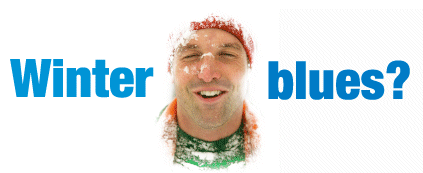
Why does Winter make people feel down?
Every year, approximately 1 in 100 people in Britain suffer from the Winter blues, or Seasonal Affective Disorder. It's a type of depression that is triggered by the reduction in light during the Autumn and Winter months.
What are the symptoms?
S.A.D surfaces in sufferers in a range of ways. While some may simply feel a little down, for others it is a serious disposition that can affect the way they function from around September to the beginning of Spring. Common symptoms include:
- In young sufferers, behavioral problems.
- Stress - feeling anxious more easily than during Summer months
- General depression - feeling down
- Lethargy - lacking the energy to carry out day-to-day activities, depending on the severity of the disorder. A sufferer may have a desire to sleep more during winter months
- Lack of libedo - reduced sex drive among sufferers
How is it treated?
Light therapy
Taking Winter breaks to lighter resorts can help suffers of S.A.D., but at home, light therapy has been to be an effective treatment, though not a cure, for the disorder.
As the name suggests, light therapy involves emulating the Summer light during Winter months. A patient will be exposed to strong light for a period of around an hour each day when the symptoms begin to appear each year, through the amount of time varies depending on the light they are exposed to. Light boxes are available which a person will sit next to, emmitting powerful rays, stronger than those available through a normal household light bulb.
Drug treatment
As with most types of depression, Seasonal Affective Depression can be treated through the use of anti-depressants, primarily Selective Serotonin Re-uptake Inhibitors such as Prozac, which alter the behavior of neurotransmitters in the brain.
How light affects us all
Evolutionary theories suggest that light plays an important role in the functioning and behavior of animals, and that through evolution, humans have retained a dependence on light to this day. Daylight helps animals of prey to see their predators, and with the onset of night, the sensation of tiredness leads them to find a safe place to sleep for the night, free from the potential to be eaten by nocturnal predators whose eyesight has adjusted to seeking out prey in the dark.
Studies have also shown that light affects not only the sleep patterns of animals, but also those of humans: by emmitting light onto the leg of a participant, researchers have been able to alter the circadian (daily) rhythm or body clock of participants of one study, suggesting that light has not only a psychological effect of telling us when we think we need to sleep, but also a physiological impact, altering the serotonin levels in the body.

























